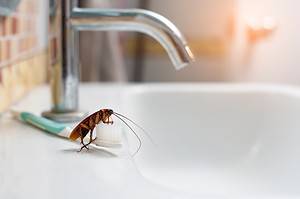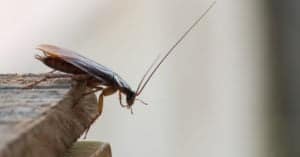As their names imply, the oriental cockroach and the American cockroach come from the same family, Blattidea. While they are both cockroaches, there are certain differences between them. In this article, we’ll show you how to tell the differences between the oriental cockroach and the American cockroach. Let’s dive right in!
Comparing an Oriental Cockroach and an American Cockroach

| Oriental Cockroach | American Cockroach | |
|---|---|---|
| Size | Length: 1in to 1.25 in | Length: 1.1in to 2.1in |
| Appearance | Black or dark-brown color; males have wings almost reaching the abdomen; females only have pads in place of wings | Reddish-brown color with some yellow markings; long antennae, two sets of wings |
| Location and Habitat | Major presence in the United States, Europe, Israel, Australia, and South America Habitat: damp places around human houses, bushes, and underneath mulches | Major presence in North America, Spain, Portugal, and the Canary Islands Habitat: Anywhere humans live from basements to kitchens to bathrooms to cabinets. |
| Predators and Threats | Toads, frogs, lizards, geckos, iguanas, and humans. | Toads, fishes, salamanders, lizards, geckos, mice, cats, etc. |
| Diet | Omnivores | Omnivores |
| Litter Size/Gestation Period | Litter size: 16 eggs Gestation period: 42-81 days | Litter size: 16 eggs Gestation period: 6-8 weeks |
Major Differences Between Oriental Cockroach Vs American Cockroach
While they are both cockroaches with a cosmopolitan distribution, there are differences between oriental cockroaches and American cockroaches, with the major ones occurring in size and appearance. Let’s get a bit more explicit, shall we?
Oriental Cockroach vs American Cockroach: Size
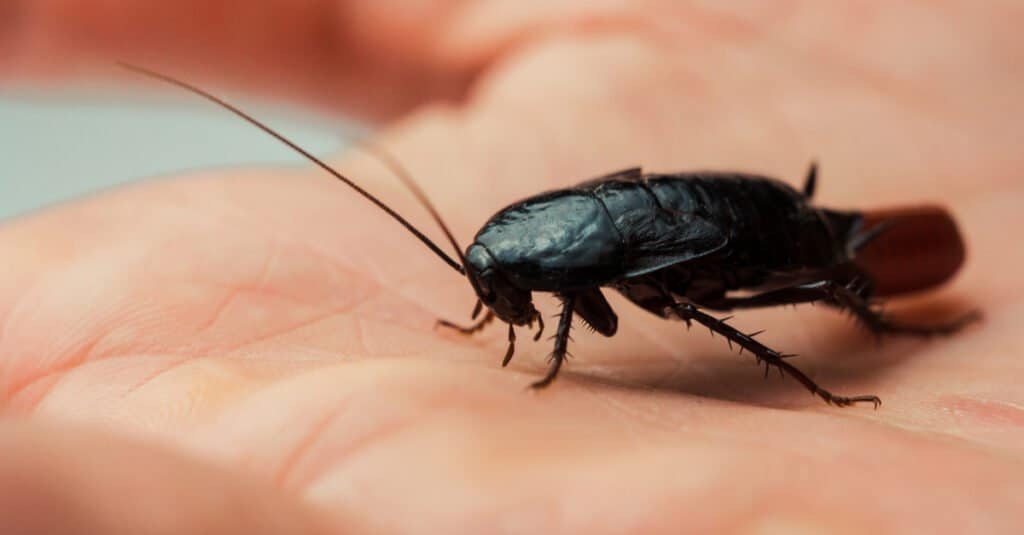
Oriental cockroaches often max out at 1.25 inches.
©Yuliia Hurzhos/Shutterstock.com
The American cockroach has a larger size with a length of 1.1 inches to 2.1 inches. On the other hand, the oriental cockroach falls short with an average length of 1-1.25 inches. So, while American cockroaches can measure up to 2.1 inches, oriental cockroaches often max out at 1.25 inches.
Oriental Cockroach Vs American Cockroach: Appearance
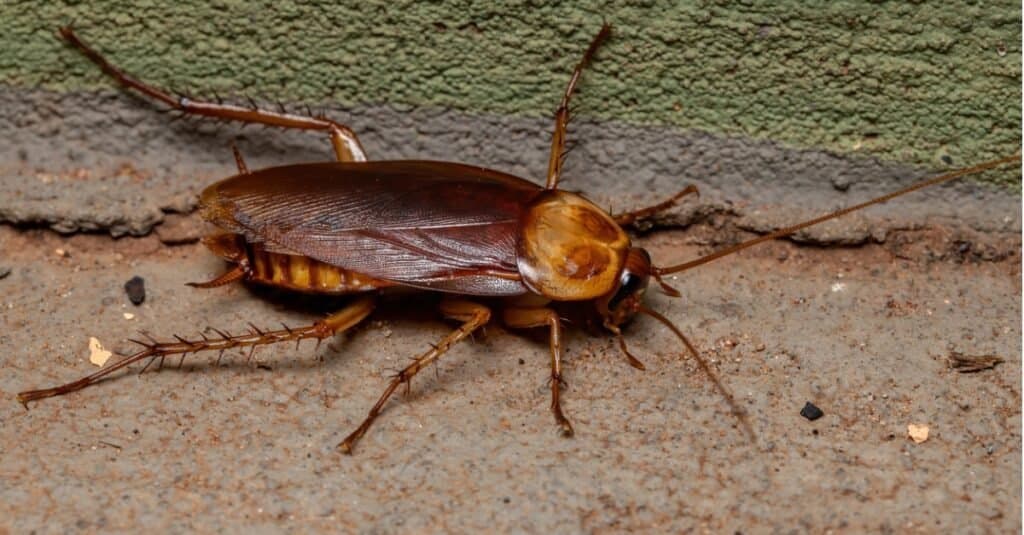
The American cockroach’s body is made up of three sections: the head, thorax, and abdomen.
©iStock.com/ViniSouza128
Oriental cockroaches and American cockroaches also differ in terms of appearance as we are about to see. Oriental cockroaches typically have a dark brown or glossy black color. The males have wings extending almost all the way down their abdomen while females have pads in place of wings. In spite of their wings, male oriental cockroaches are flightless.
American cockroaches, on the other hand, have a reddish-brown color with some yellow spots behind their heads. They also have long antennae and two sets of wings with the fore wings being the stronger ones. Unlike oriental cockroaches, American cockroaches are capable of flying short distances when they feel threatened.
Oriental Cockroach Vs American Cockroach: Location And Habitat
Oriental cockroaches and American cockroaches typically have the same habitat and they both have a cosmopolitan distribution.
Oriental cockroaches are mostly found in the United States, Europe, Israel, South America, and Australia. However, due to global commerce and international trade, they now have a cosmopolitan distribution and can be found all over the world. Their habitats include moist places around the house like damp basements, leaky drains, pipes, and other such areas. They are also found outdoors during warm weather in areas like sewers, trash cans, and under mulches.
American cockroaches are more commonly found in North America, Spain, Portugal, and the Canary Islands. They live in human houses, especially in kitchens, bathrooms, cabinets, and basements. They can also be found outdoors in crawl spaces, lawns, sidewalks, and porches to mention a few.
Oriental Cockroach Vs American Cockroach: Diet
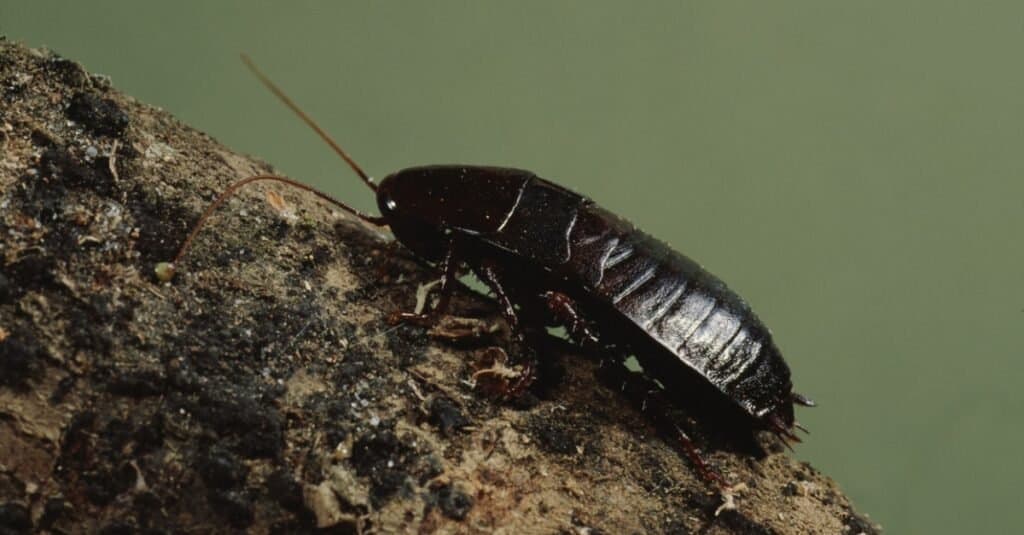
Oriental cockroaches can eat anything as long as they find it consumable.
©iStock.com/Weber
Oriental cockroaches and American cockroaches are omnivores with similar diets. They can eat anything as long as they find it consumable, from feces to starchy foods to garbage to leftover meats. There is virtually nothing off-limits for these roaches.
They also constantly look for water which is why they both frequent water sources like pipes and sewers. As far as diets go, there is no significant difference between oriental cockroaches and American cockroaches.
Oriental Cockroach Vs American Cockroach: Predators And Threats
Oriental cockroaches and American cockroaches also suffer onslaughts from other animal predators as well as humans. Since they both like to stay outdoors on occasions, they are frequently preyed upon by birds, toads, fishes, lizards, salamanders, and geckos, among many others.
In addition, humans have also declared eternal war on common cockroaches including oriental and American cockroaches. People go out of their way to decimate them using chemicals as well as physical kills. And given the nastiness of their infestations and the number of harmful parasites they carry, you really can’t blame humans who want them destroyed alongside the entire cockroach family.
Oriental Cockroach Vs American Cockroach: Conservation Status
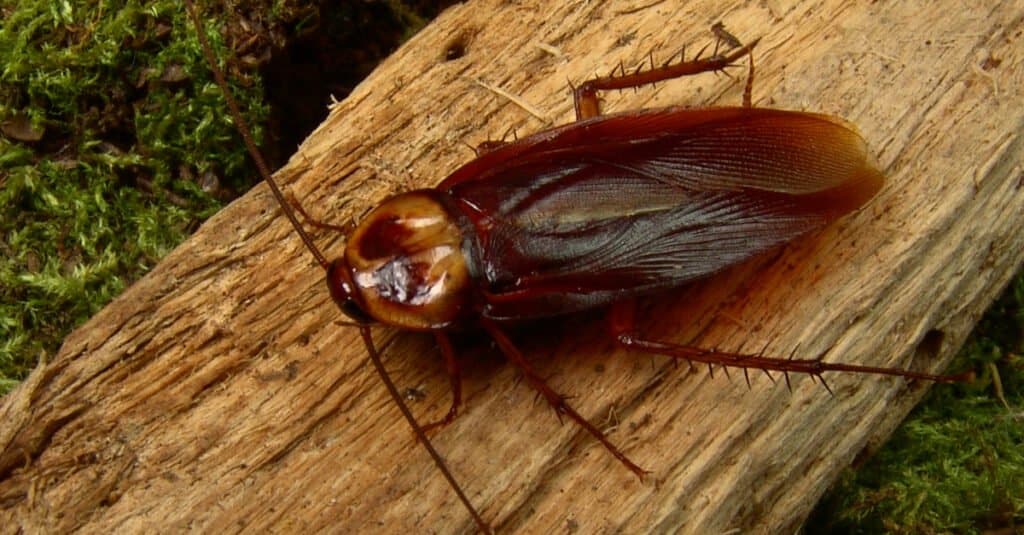
American cockroaches do not have a population problem and have never been a source of concern for conservationists.
©skifbook/Shutterstock.com
Conservationists are always on the lookout for animals who are likely to fade out of existence owing to declining populations. However, oriental cockroaches and American cockroaches, like other cockroach species, do not have a population problem and have never been a source of concern for conservationists. What we have instead are human house owners and pest control experts trying to actively exterminate and get rid of them because of their nastiness and their proclivity to infestation.
The photo featured at the top of this post is © iStock.com/Weber
Thank you for reading! Have some feedback for us? Contact the AZ Animals editorial team.





